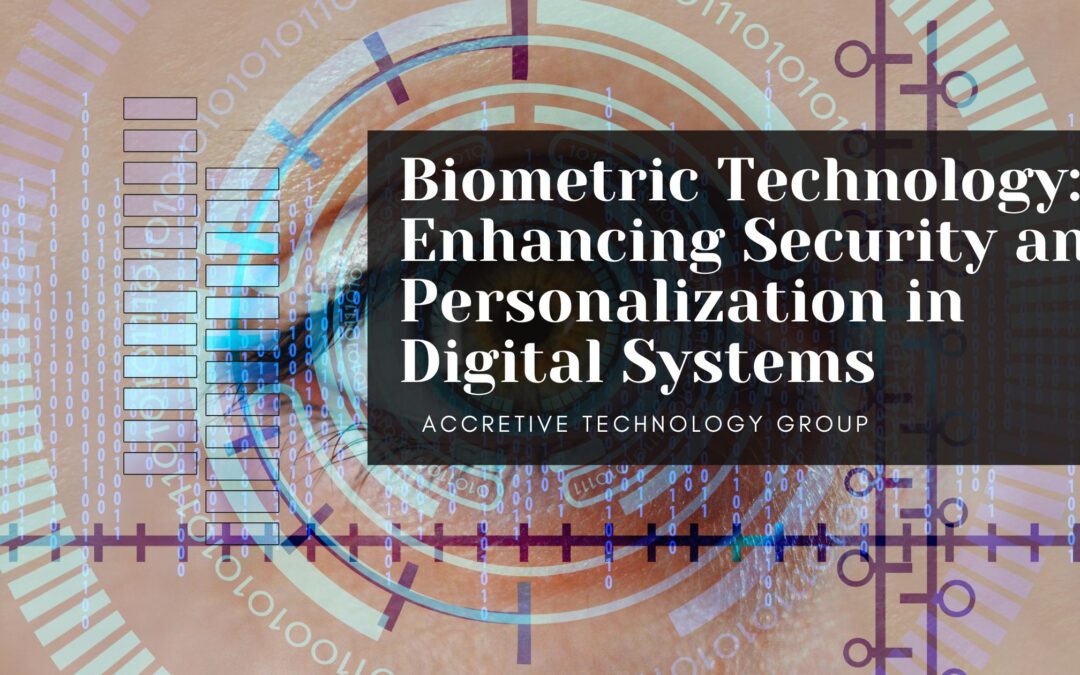In an increasingly digital world, the need for robust security measures and personalized experiences has never been greater. Biometric technology, which uses unique physical or behavioral characteristics to authenticate users, offers a powerful solution to these challenges. From fingerprint scanners and facial recognition to voice authentication and iris scans, biometrics are transforming the way we interact with technology, enhancing security and personalization in digital systems. In this article, we’ll explore the evolution of biometric technology, its applications across various industries, and its potential to shape the future of digital identity.
- The Evolution of Biometric Technology: The concept of biometric identification dates back centuries, with early examples including fingerprints used as a means of identification in ancient civilizations. However, it wasn’t until the 20th century that biometric technology began to gain traction as a viable security solution. The development of automated fingerprint recognition systems in the 1960s marked a significant milestone in the evolution of biometrics, paving the way for future advancements in the field.
- Types of Biometric Modalities: Biometric technology encompasses a wide range of modalities, each based on unique physical or behavioral characteristics. Common biometric modalities include:
– Fingerprint Recognition: Fingerprint scanners capture and analyze the unique patterns of ridges and valleys on an individual’s fingertips.
– Facial Recognition: Facial recognition systems use algorithms to analyze facial features such as the size, shape, and spacing of eyes, nose, and mouth.
– Iris Recognition: Iris recognition technology captures high-resolution images of the iris, the colored part of the eye, to create a unique biometric template.
– Voice Authentication: Voice authentication systems analyze the unique characteristics of an individual’s voice, including pitch, tone, and pronunciation.
– Behavioral Biometrics: Behavioral biometrics analyze patterns of behavior, such as typing rhythm, gait, and mouse movements, to verify a user’s identity.
- Applications of Biometric Technology: Biometric technology is widely used across various industries and applications, including:
– Security and Access Control: Biometric authentication is used to secure physical and digital access to buildings, devices, and sensitive information.
– Financial Services: Biometric authentication enhances security in banking and financial transactions, including ATM withdrawals, mobile payments, and online banking.
– Healthcare: Biometrics are used to verify patient identities, secure medical records, and prevent unauthorized access to sensitive healthcare data.
– Travel and Border Control: Biometric passports and eGates use facial recognition and iris scans to streamline the immigration process and enhance border security.
– Consumer Electronics: Biometric authentication features prominently in smartphones, laptops, and other consumer devices, providing users with secure and convenient access to their devices and data.
- Advantages of Biometric Technology: Biometric technology offers several key advantages over traditional forms of authentication:
– Security: Biometric identifiers are unique to each individual and difficult to replicate or steal, making them highly secure authentication methods.
– Convenience: Biometric authentication eliminates the need for passwords or PINs, providing users with a seamless and frictionless experience.
– Personalization: Biometric technology enables personalized experiences based on individual preferences and characteristics, enhancing user engagement and satisfaction.
– Accuracy: Biometric systems have high accuracy rates and low false acceptance and rejection rates, minimizing the risk of unauthorized access or identity fraud.
- Challenges and Considerations: While biometric technology offers significant benefits, it also presents challenges and considerations, including:
– Privacy Concerns: Biometric data is highly sensitive and raises privacy concerns related to data collection, storage, and use.
– Security Risks: Biometric systems may be vulnerable to spoofing attacks, where malicious actors attempt to deceive the system using fake biometric samples.
– Regulatory Compliance: Biometric technology is subject to various regulations and standards, including data protection laws and industry-specific regulations.
Biometric technology represents a powerful tool for enhancing security and personalization in digital systems. From fingerprint scanners and facial recognition to voice authentication and iris scans, biometrics offer secure, convenient, and personalized authentication solutions across various industries and applications. As biometric technology continues to evolve, it will play an increasingly important role in shaping the future of digital identity and authentication, offering users secure and seamless experiences in an increasingly connected world.

